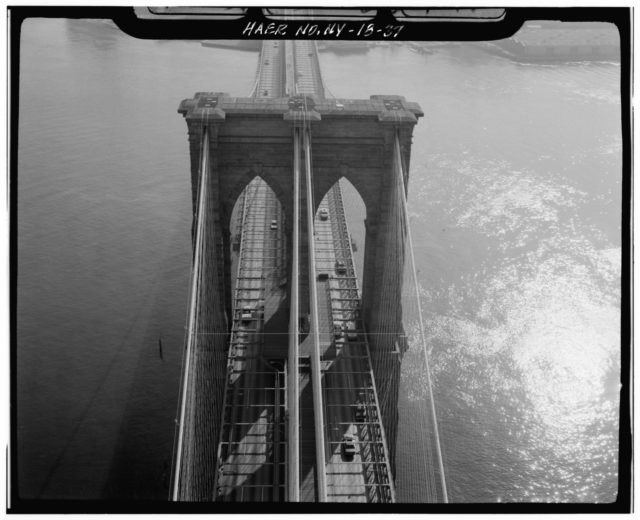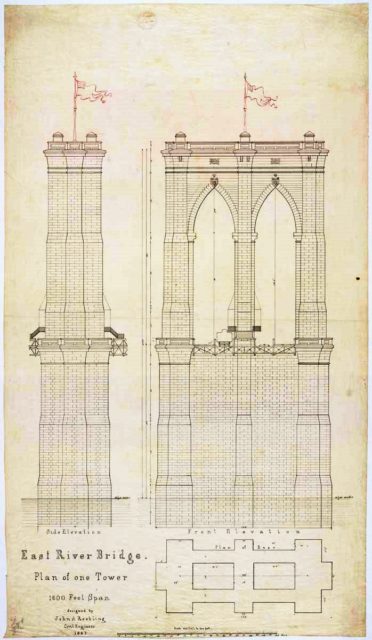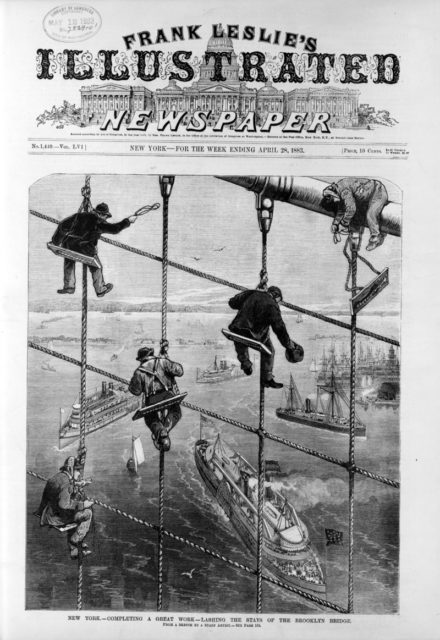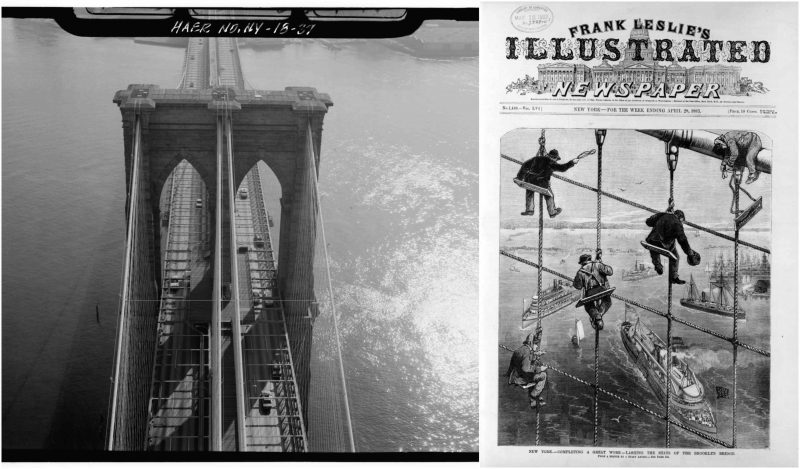The bridge — originally referred to as the New York and Brooklyn Bridge and as the East River Bridge – was opened for use on May 24, 1883.
The opening ceremony was attended by several thousand people and many ships were present in the East Bay for the occasion. President Chester A. Arthur and Mayor Franklin Edson crossed the bridge to celebratory cannon fire and were greeted by Brooklyn Mayor Seth Low when they reached the Brooklyn-side tower.
Arthur shook hands with Washington Roebling at the latter’s home, after the ceremony. Roebling was unable to attend the ceremony (and in fact rarely visited the site again), but held a celebratory banquet at his house on the day of the bridge opening. Further festivity included the performance of a band, gunfire from ships, and a fireworks display.

On that first day, a total of 1,800 vehicles and 150,300 people crossed what was then the only land passage between Manhattan and Brooklyn. Emily Warren Roebling was the first to cross the bridge. The bridge’s main span over the East River is 1,595 feet 6 inches (486.3 m).
The bridge cost US$15.5 million in 1883 dollars (about US$380,946,000 in today’s dollars) to build and an estimated number of 27 people died during its construction.
On May 30, 1883, six days after the opening, a rumor that the bridge was going to collapse caused a stampede, which was responsible for at least twelve people being crushed and killed.
On May 17, 1884, P. T. Barnum helped to quench doubts about the bridge’s stability — while also publicizing his famous circus — when one of his most famous attractions, Jumbo, led a parade of 21 elephants over the Brooklyn Bridge.

At the time it opened, and for several years, it was the longest suspension bridge in the world — 50% longer than any previously built — and it has become a treasured landmark. Since the 1980s, it has been floodlit at night to highlight its architectural features.
At the time it was built, the aerodynamics of bridge building had not been worked out. Bridges were not tested in wind tunnels until the 1950s, well after the collapse of the original Tacoma Narrows Bridge (Galloping Gertie) in 1940.
It is therefore fortunate that the open truss structure supporting the deck is by its nature less subject to aerodynamic problems.
Roebling designed a bridge and truss system that was six times as strong as he thought it needed to be. Because of this, the Brooklyn Bridge is still standing when many of the bridges built around the same time have vanished into history and been replaced.
This is also in spite of the substitution of inferior quality wire in the cabling supplied by the contractor J. Lloyd Haigh — by the time this was discovered, it was too late to replace the cabling that had already been constructed.

Roebling determined that the poorer wire would leave the bridge four rather than six times as strong as necessary, so it was eventually allowed to stand, with the addition of 250 cables. Diagonal cables were installed from the towers to the deck, intended to stiffen the bridge. They turned out to be unnecessary, but were kept for their distinctive beauty.
